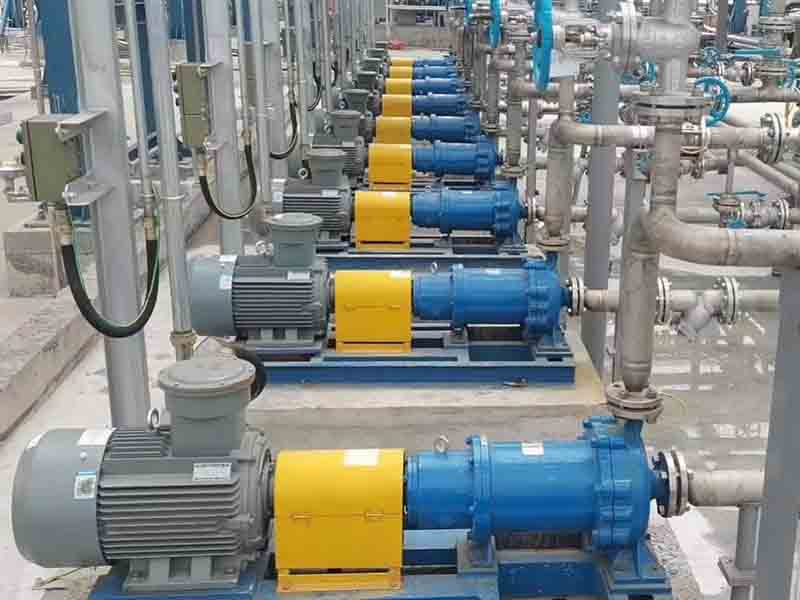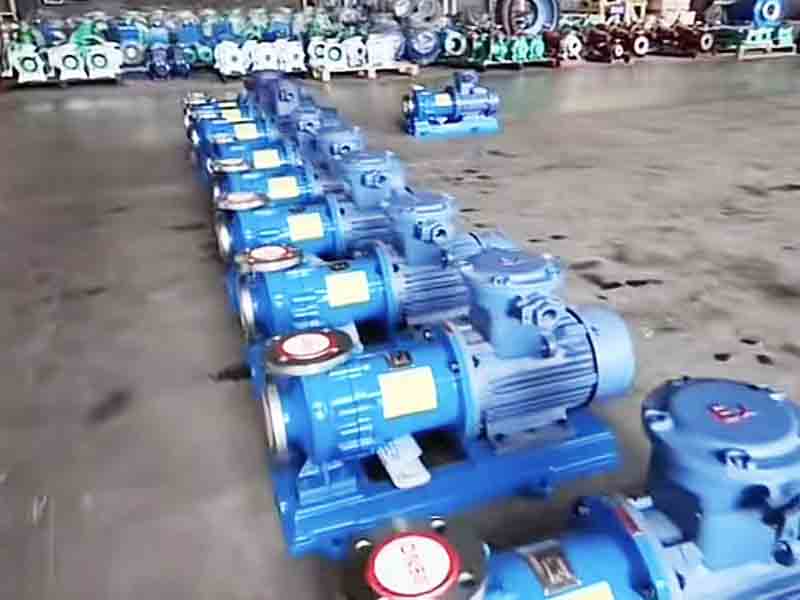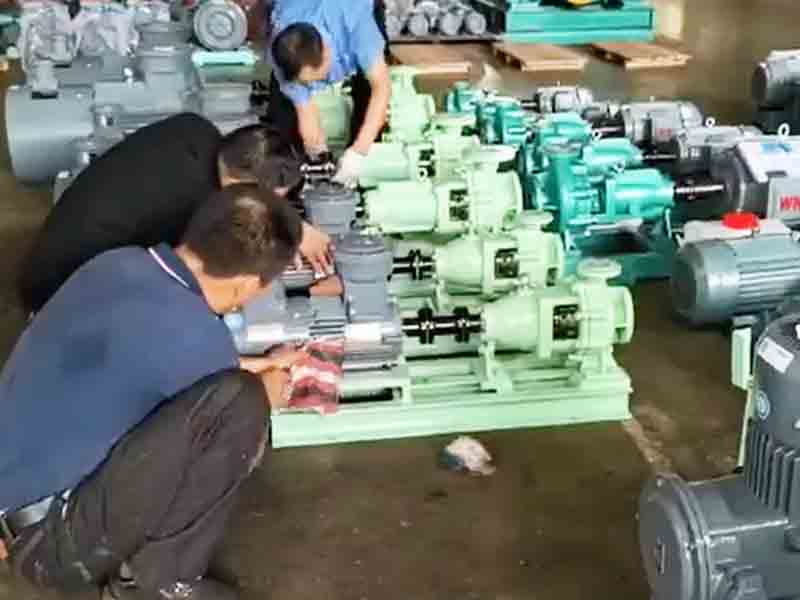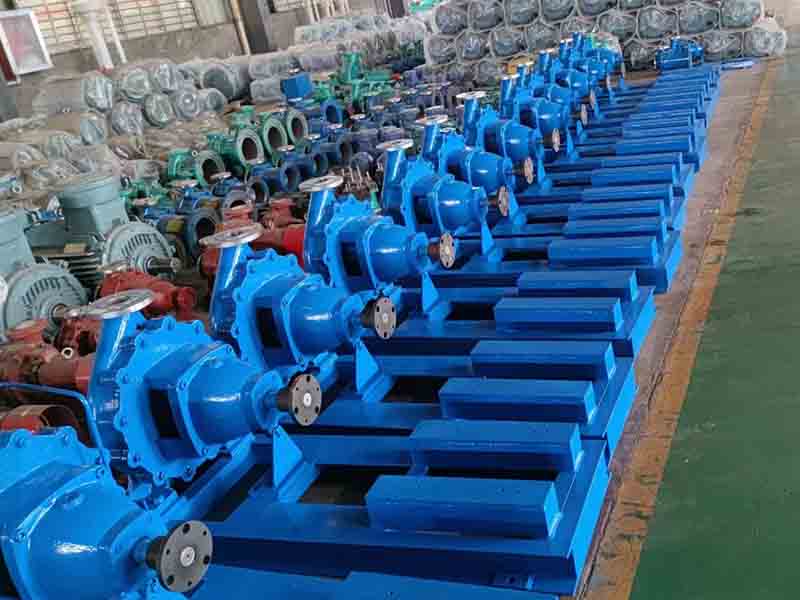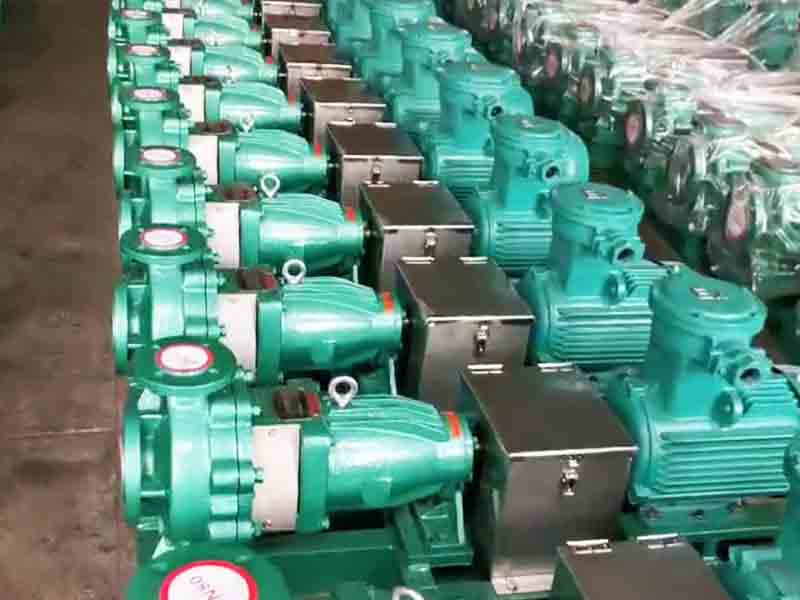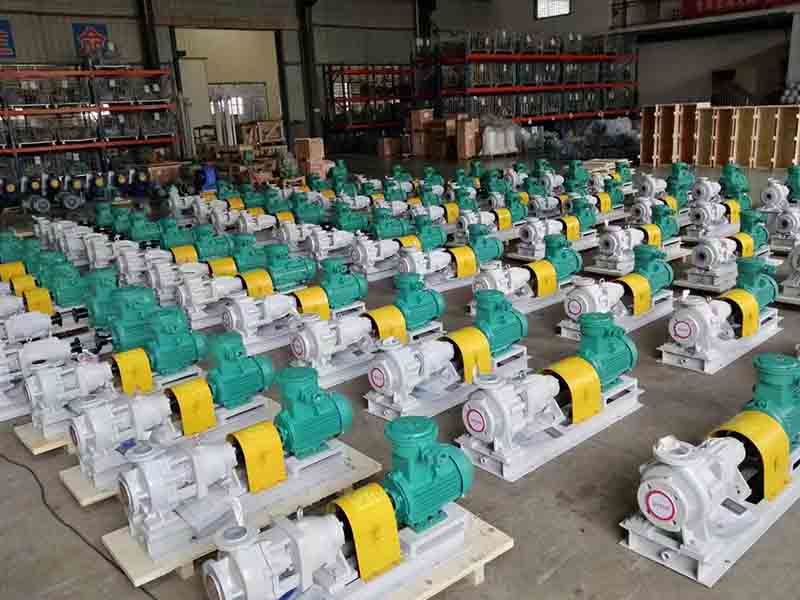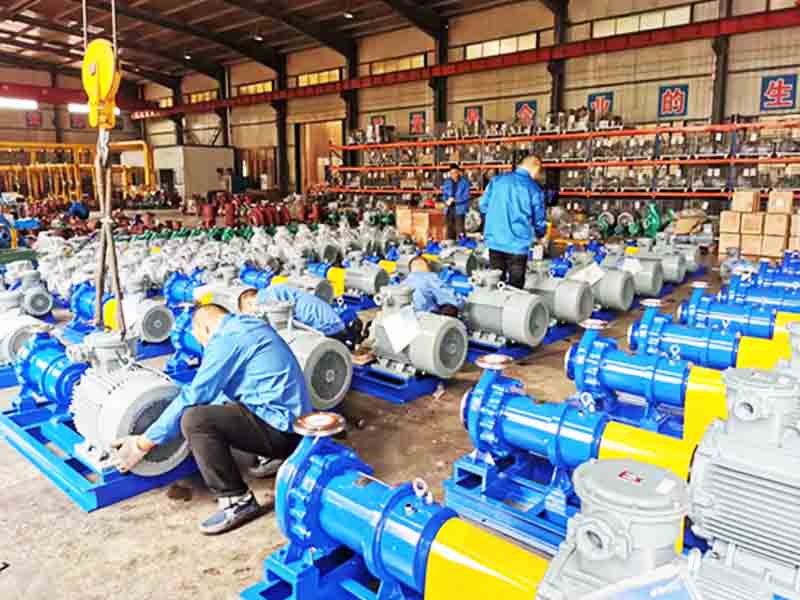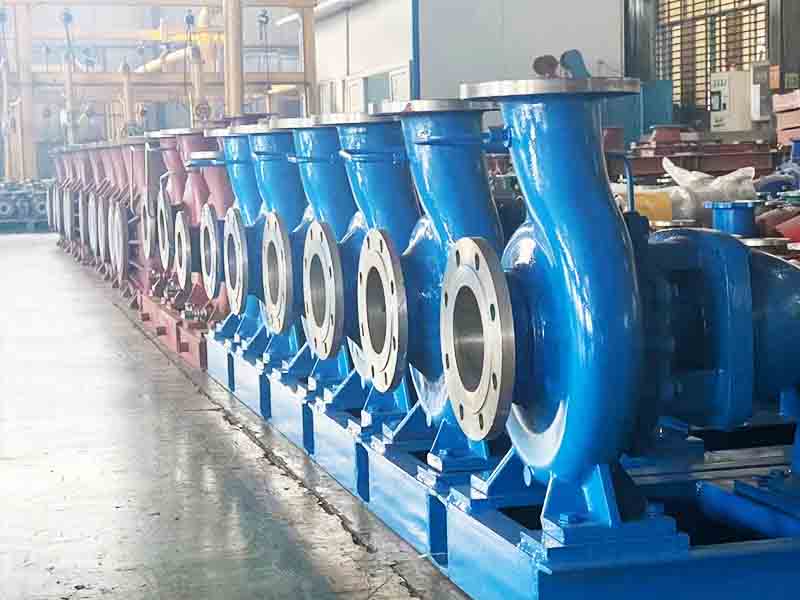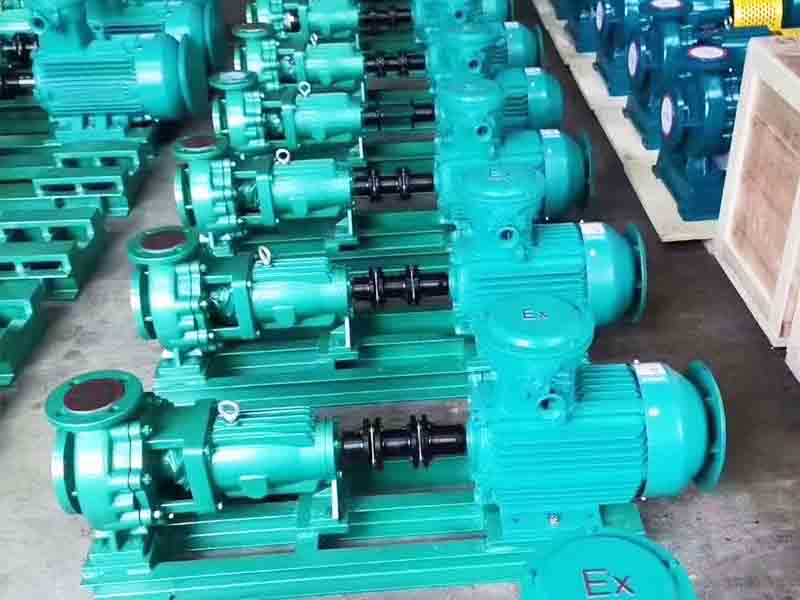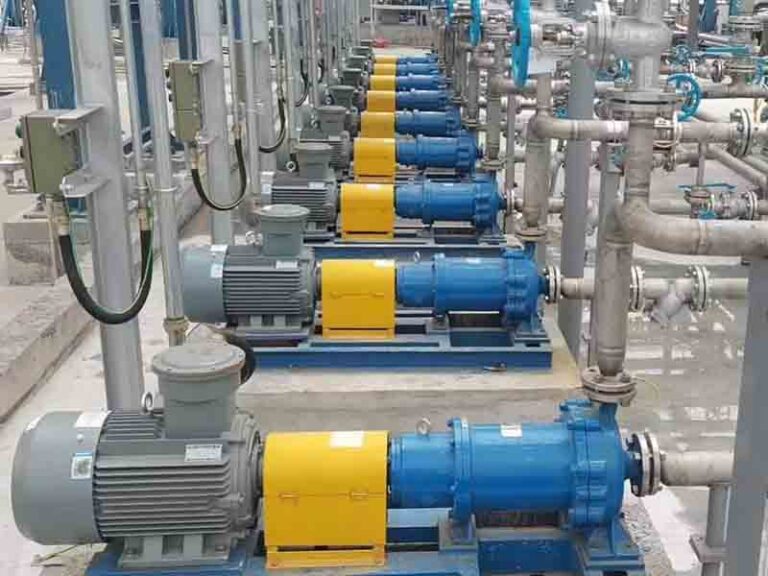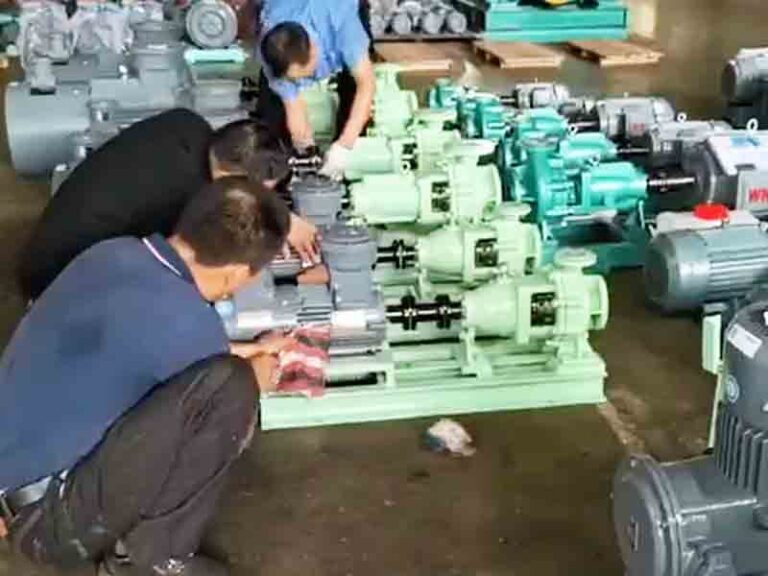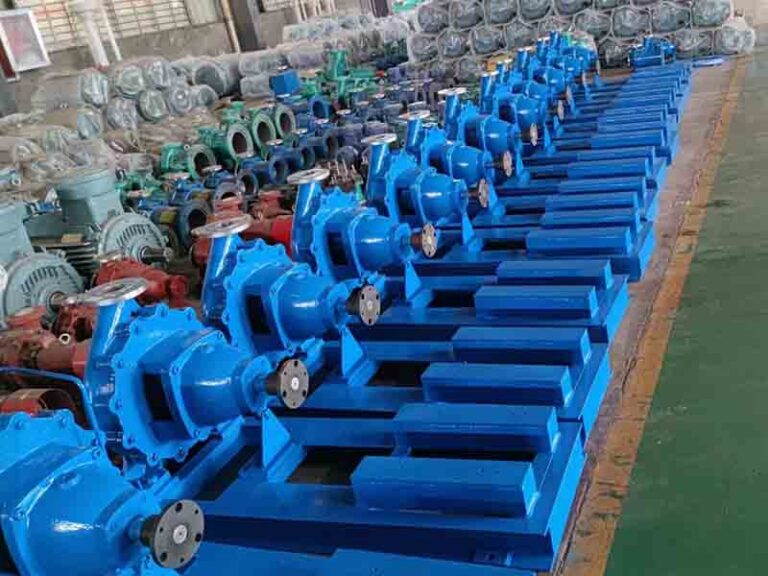Introduction
In a chemical production plant, a key chemical magnetic pump suddenly stops running, causing the entire production line to be interrupted. Such a scenario is not an isolated case. Pump failure, once it occurs, not only brings direct maintenance costs, but also causes immeasurable economic losses due to production stoppage. Simply put, pump failure refers to the self-priming centrifugal pump can not be efficiently realized from a source to control the flow of fluid to another source of the expected function.
Pumps occupy a central position in many industries, including chemical, marine, energy and aerospace. From oil transfer to gas transportation, from water supply systems to fuel refueling, the stable operation of pumps is an important safeguard for industrial production. Pump failures, however, can lead to unplanned downtime, high repair costs, and even interruptions to the entire production process, directly affecting the productivity, profitability, and overall operational performance of an organization.
The Importance of the Pump
The role of the pump in industry
As a “fluid mover” in industry, the standard centrifugal pump undertakes the critical task of transporting all types of fluids. In the chemical industry, it is responsible for the transmission ofacid-resistant chemical pumps and highly viscous chemical raw materials; in the field of shipping, it is used for the treatment of bilge water and ballast water; in the energy industry, it undertakes the long-distance transportation of oil and natural gas; and in aerospace, it is used for the precise transportation of fuel. It can be said that the stable operation of the pump is the basis for continuous and efficient industrial production.
The impact of pump failure on operations
In the event of a pump failure, the production process is severely disrupted. Production lines are interrupted and raw materials cannot be delivered in time, leading to delays in order delivery. Frequent breakdowns not only increase maintenance costs, but also shorten the service life of the equipment due to accelerated aging. Worse still, some failures can lead to safety risks, threatening the personal safety of operators.
The Most Common Types of Pump Failures
Cavitation
Cavitation is one of the most destructive problems facing centrifugal impeller pumps. When the pressure of the liquid in the pump is lower than the vapor pressure, bubbles form rapidly and burst on the impeller and internal surfaces. This violent shock causes erosion of the impeller and pump casing, generating strong vibrations and reducing the efficiency of the pump. If left untreated, cavitation can eventually lead to complete pump failure.
The main cause of cavitation is improper inlet conditions, such as insufficient suction pressure, air leakage, or poor installation design. Preventing cavitation requires regular maintenance and condition monitoring. By adjusting system pressure, checking inlet valves and routinely inspecting pump operation, the hazards associated with cavitation can be effectively reduced.
Mechanical seal leakage
Once the mechanical seal starts to leak, mag-drive pump failure will ensue. The two sealing surfaces of a mechanical seal must be perfectly aligned to prevent leakage. However, improper lubrication, high temperatures, and pressure fluctuations can cause the seal ring to degrade. When the secondary sealing area wears out, the conveyed fluid leaks, which in turn causes contamination, reduced efficiency, and even failure of the entire system. Mechanical seal failure can also trigger dry running, leading to heat buildup and damage to components such as bearings and O-rings.
Sealing surfaces can be kept in good condition through proactive maintenance such as monitoring temperatures, checking for leaks, replacing worn gaskets and lubricating systems. Small signs such as minor leaks or pressure drops should be dealt with as soon as they are detected to avoid higher repair costs later on.
Excessive vibration
A normally operating engine centrifugal pump should be kept in a smooth, low vibration condition. If excessive vibration is detected, this is a serious warning sign that the pump has an imbalance problem. Excessive vibration can be caused by shaft misalignment, bearing failure, or component wear, and vibration can accelerate wear on critical components, which can lead to pump failure. Prolonged vibration can damage mechanical seals, impellers and motor shafts, shortening the life of the equipment and, in severe cases, even leading to complete motor failure and production standstill.
Vibration can be effectively controlled by regularly checking alignment, maintaining proper lubrication and monitoring bearing temperatures. Tracking pump performance data in real time with a condition monitoring system can help make maintenance decisions before vibration causes serious failure.
Premature Wear
Premature wear of horizontal magnetic pump components is when they break down faster than expected. Components such as sealing rings, bearings and impellers can wear significantly faster if they are not properly maintained during use. High pressure operation, temperature fluctuations and poor lubrication are common causes of excessive component wear, which can lead to frequent repairs and downtime.
Common Causes of Pump Failure
Mechanical seal leakage
Mechanical seals leak for a variety of reasons, with dry running, thermal deformation and misalignment of the seal ring being common factors. Once the small gap between sealing surfaces is affected by external factors, it can lead to fluid leakage, which in turn can cause a range of problems.
Bearing Problems
According to a technical report from RKB Bearing Group, 80% of bearing failures are caused by improper lubrication. Overheating, improper bearing selection, overloading and fatigue can also lead to premature bearing failure, affecting the normal operation of the durable centrifugal pump.
Impeller Wear
The main causes of impeller wear include erosion. In addition, pressure imbalances caused by improperly sized pumps can accelerate impeller wear and reduce pump efficiency.
Coupling Related Problems
Coupling failures are usually caused by misalignment, overloading, special environmental factors, torsional vibration and improper lubrication. These problems can affect power transmission and lead to erratic pump operation.
Operational Errors
Even state-of-the-art pumps can fail if the operating parameters are outside the design range. Improper startup and shutdown operations, overloaded operation, and ignoring the manufacturer’s instructions can lead to overheating, excessive wear, and even dangerous failures. In the case of submersible pumps, failure to maintain adequate immersion depth can lead to dry running, resulting in seal failure and motor burnout.
Power Supply Issues
A stable power supply is critical to pump performance. Voltage fluctuations, surges and unplanned power outages can cause damage to the motor, leading to overheating, inefficiency and even complete failure. Submersible pumps require even more power supply stability due to the humid environments in which they operate. The use of Electrical Signature Analysis (ESA) technology can detect current anomalies before failure occurs, while the installation of surge protectors, back-up power systems and regular electrical inspections can provide additional safeguards for pump operation.
Signs of Pump Failure
Abnormal Noise
Abnormal noises from the pump can be caused by cavitation, air leaks, worn bearings, impeller damage, or shaft misalignment. These noises are “distress signals” from the magnetic chemical pump, alerting the operator to potential problems with the equipment.
Excessive Vibration
As mentioned earlier, shaft misalignment, imbalance, cavitation, bearing wear, or improper installation can cause a magnetic pump to vibrate excessively. Vibration monitoring allows these problems to be detected and action taken in a timely manner.
Leakage
Leaks due to seal failure are usually caused by seal wear, excessive pressure, misalignment, temperature fluctuations or contamination. As soon as a leak is detected, it should be addressed to prevent the problem from worsening.
Unstable Performance
Unusual fluctuations in flow, pressure or efficiency are also potential signs of pump failure. These changes can be caused by damage to internal components or abnormal system parameters.
Frequently Asked Questions about Pump Failures
How long does a pump last?
The service life of a pump is affected by operating conditions, maintenance frequency, and pump type. With proper maintenance, most pumps have a life expectancy of 5 to 15 years.
Why does a pump make an unusual noise?
Common causes of abnormal noise include cavitation, air leaks, worn bearings, damaged impellers, or shaft misalignment.
Why does a pump vibrate excessively?
Excessive vibration is usually caused by shaft misalignment, imbalance, cavitation, bearing wear, or improper installation.
What causes pump seal failure?
Seal failure can be caused by seal wear, excessive pressure, misalignment, temperature fluctuations, or contamination, which ultimately leads to leakage.
Are submersible pumps more prone to failure?
Yes, submersible pumps are more susceptible to seal failure, water ingress, electrical problems, and insulation failures due to the extreme underwater environment in which they operate.
What is the best way to remotely monitor pump health?
Electrical Signature Analysis (ESA), vibration monitoring, and IoT-based condition monitoring technologies enable real-time remote diagnostics of high temperature resistant stainless steel chemical pumps.
What maintenance program should be followed to prevent pump failures?
A preventive maintenance program should include monthly, quarterly and annual periodic inspections, lubrication, seal checks, vibration analysis and thermal imaging.
How to Reduce the Risk of Pump Failure
Choosing a reliable manufacturer
Choosing an alkali centrifugal pump manufacturer with a good reputation and track record is the first step in ensuring pump quality and reliability. Well-known manufacturers usually have more advanced technology and stricter quality control systems.
Selecting the right pump
Select a non-leakage magnetic pump that is properly sized and has the flow rate and pressure to meet the requirements of the specific application. Selection can be made under the guidance of the manufacturer to ensure that the pump matches the use scenario.
Correct installation
Have the pump installed by a professional and ensure that the installation process meets the manufacturer’s requirements. Correct installation avoids the risk of failure due to improper installation.
Follow the manufacturer’s instructions
Using and maintaining the pump in strict accordance with the operating and maintenance instructions provided by the manufacturer is fundamental to ensuring that the pump operates correctly.
Regular inspection and maintenance
Regular inspection and maintenance of the pump, in accordance with the manufacturer’s recommended intervals, identifies and addresses potential problems in a timely manner.
Early warning detection
Pay close attention to signs of abnormality during pump operation, such as vibration, noise, leakage, etc., and take prompt action once problems are detected.
Use high-quality components and fluids
Choosing high-quality, compatible pump components and fluids reduces the risk of failure due to component quality issues.
Avoid failure-prone conditions
Understand the conditions that can lead to pump failure, such as cavitation, overheating, and dry running, and take steps to avoid them.
Implementing a monitoring system
Utilizing a monitoring system to track pump performance data in real time enables preventive maintenance by identifying potential problems in advance.
Developing a failure response plan
Formulate a pump failure response plan in advance, prepare spare parts, and master basic troubleshooting and repair methods to reduce downtime.
Conclusion
Pump failure is a non-negligible problem in industrial production. Understanding its types, causes and signs, and taking effective preventive and countermeasure measures are essential to safeguard production continuity and reduce operating costs.
By choosing quality equipment, proper installation and use, regular maintenance and real-time monitoring, companies can minimize the risk of pump failure and ensure efficient and stable production operation. Every industrial practitioner should pay attention to pump maintenance and management, will prevent the work done in front, to avoid unnecessary losses due to pump failure.


